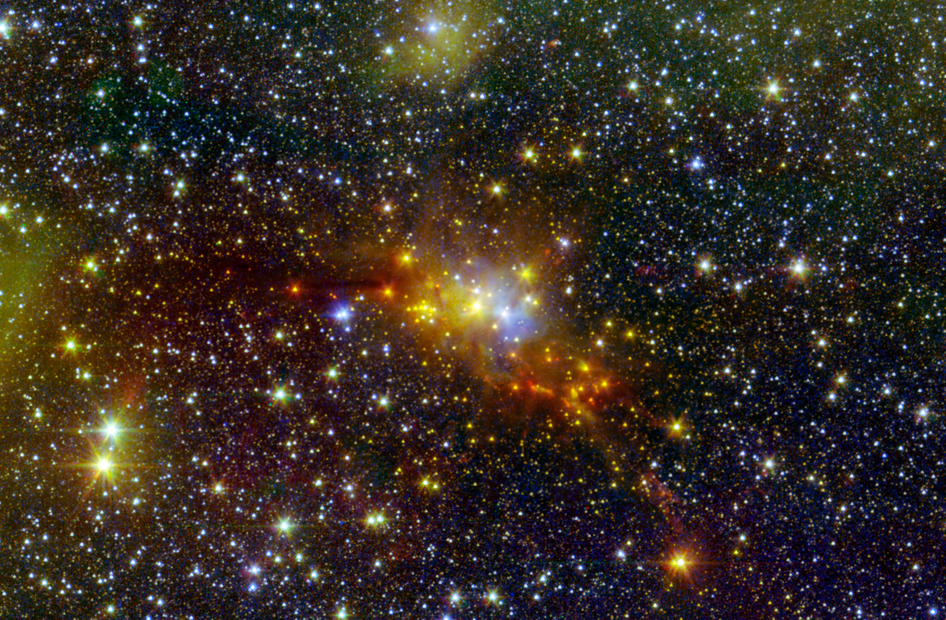

Revealed in this recent image taken by NASA’s Spitzer Space Telescope and the Two Micron All Sky Survey (2MASS) is the star-forming region called the Serpens Cloud Core. The cluster shown contains stars that are among the youngest found in our galaxy! Using infrared technology the telescopes captured details within the stellar breeding ground that were previously unavailable.
By assigning visible colors to the infrared light within the structure, astronomers are able to peer through the fog of gas and dust to observe embryonic stars, just taking shape. “They appear as red, orange and yellow points clustered near the center of the image. Other red features include jets of material ejected from these young stars” (NASA). The nebula’s central cloud, which is chock-full of star birthing ingredients, is colored blue.
Located 750 light-years away in the Serpens (Serpent’s) constellation, this region of space is lacking the existence of super luminous stars. “The core contains a dense, very young, low mass stellar cluster with more than 300 objects in all evolutionary phases, from collapsing gaseous condensations to pre-main sequence stars” (The Serpens Molecular Cloud). Stars, located in the foreground and background of the Serpent, provide most of the pinpricks of light seen in the picture. The formation itself consists of low to moderately sized celestial objects, which appear dimmer in the night sky.
It took an over 16 hours of observation and a compilation of 82 individual photographs to construct the image above. Although the use of light filters makes it possible to examine portions of space that would normally be invisible to us, there is still a region within the Serpens Cloud Core, located to the left, which is too thick for even the infrared filter to penetrate.
By continuing to study such stellar nurseries in detail, scientists can begin to unravel the mystery of how stars with varying masses form within nebulae. It also allows us to understand in, further detail, how chemical composition contributes to the fusion process of star’s lifetime. The evolutionary actions that occur with nebulae contain a wealth of information that can then be applied to future examinations of the cosmos.